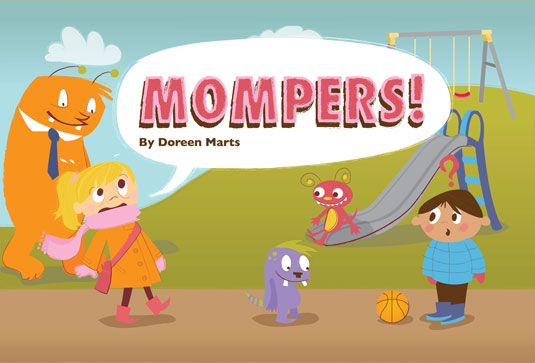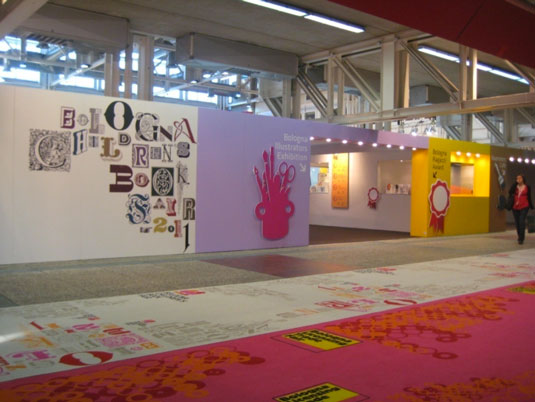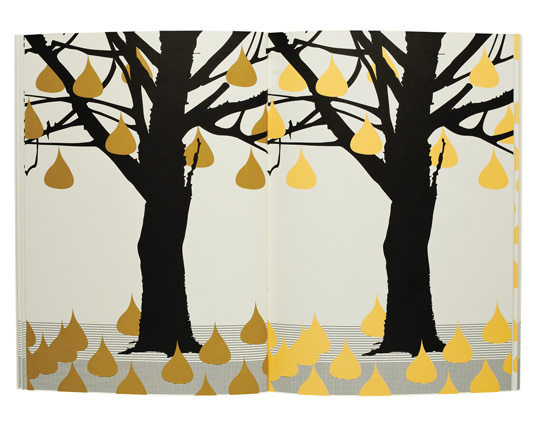Picture Books From Different Countries
With increasing numbers of people preferring to read on screen you could be forgiven for being fearful for the future of children's picture books. I wouldn't be. Anyone who has experienced the heady frisson between child and iPad knows that the digital tablet does the exact opposite of a book.
The eyes grow wide in the glare of the screen, the constant need to touch the screen for the next thing becomes frantic, the next interactive story is demanded, the next game and more! More! More! The exact opposite of what you need at quiet or bedtime. So I foresee a healthy demand for physical, printed picture books continuing for a long while to come yet...
So the market is good and ready, but how do you actually get a children's book published? There are many routes but here are the basic stages that publishers would expect.
01. Produce a dummy
Once you've come up with your story idea, you need to create a dummy. This should consist of a few spreads of finished artwork so the publisher can get a good feel for how the finished book will look. The rest need only be pencil sketches outlining the structure, pace, flow and page turning experience of the book.

If you're struggling to get your dummy looking how you want it, you'll find some handy advice and inspiration in our article How to illustrate children's books by Doreen Marts.
02. Finding an agent/publisher
The next step is to compile a list of relevant agents and publishers (a good resource in the UK is The Writers' & Artists' Yearbook) and start contacting them. Some agents and publishers are happy to see PDFs initially while others prefer a printed sample, so it's worth enquiring about preference before you send it to them.
If you do have a book you've already completed that's usually fine for submission too (unlike an adult novel, it won't take too long for the publisher to read). However, a contract is usually issued based on the dummy, with the potential to for the publishers to make changes.
Sometimes when an illustrator presents a dummy, the publishers may love the artwork but not be so keen on the story. They may instead wish to commission the illustrator to illustrate a story that their team of writers have already produced.
03. Meetings and fees
The commercial potential of the dummy will then be discussed at publishing company during a series of meetings. The larger the company, the more people and departments it will have to be passed through.
Finally, if the publishers are interested in your book fees will be discussed. Usually this is in two stages: a fee for the dummy (which will then be tested at a book fair) and a fee for the completed book if the testing goes well.
There'll usually be a one-off fee for the dummy and a small percentage of the final fee for completion. There are usually two deals. A one-off fee or a smaller fee with a royalty percentage for every book sold. (Which entirely depends on the commercial success of the book).
It's worth mentioning that fees are not set in stone and there is no harm in asking for more if you think the fees are too low. Often a deal can be struck where both partners are happy.
04. Testing the book

The book will now usually travel to an international book fair to see what kind of interest it drums up. The largest and most prestigious for this market is the Bologna Children's Book Fair: a meeting place for all professionals involved with creating and publishing children's books.
The book fair is primarily used for the buying and selling of rights and translations of the books. Often a book will be translated into many different languages. There are also a series of awards that are announced, giving a real insight into the direction and flavour of new ideas within children's book publishing.
05. Producing the book
Once the contract has been signed, the final book is ready to be produced. Depending on a number of variants the publisher may or may not want to change some of the aspects of the book, characterisation or story. This will involve a lot of to'ing and fro'ing between editor and marketing departments.
The cover especially will be discussed at length between the editorial team, the marketing team and the illustrator as this is the book's major selling point. The book will normally be assigned a graphic designer who will be mainly responsible for typography and image placement - which is of obvious importance to the quality and flow of the book - as well as playing a pivotal part in deciding what the cover will look like.
06. And finally...

After many hours, many discussions, revisions and versions the book will be finished and ready for print in one or more languages depending on the rights sold. And then, the most satisfying part of any illustrators career, that characteristic thud of the first copies through the letterbox received before the book ventures into the big bad world!
Also read:
- A guide to book illustration for beginners
- New cover designs for children's classics
- Inspirational Penguin book cover designs
Picture Books From Different Countries
Source: https://www.creativebloq.com/illustration/6-steps-getting-your-childrens-picture-book-published-11135313
0 Response to "Picture Books From Different Countries"
Post a Comment